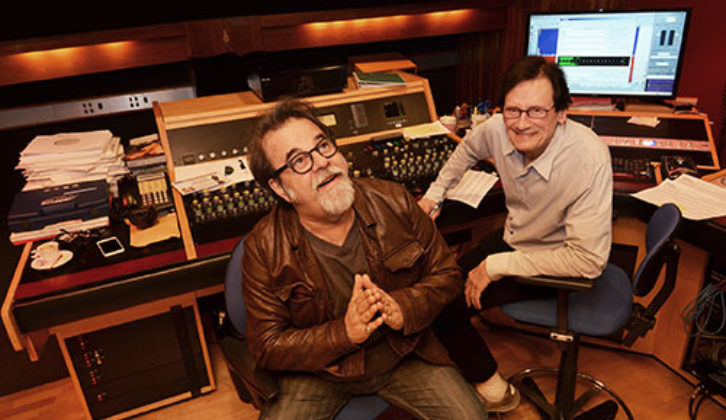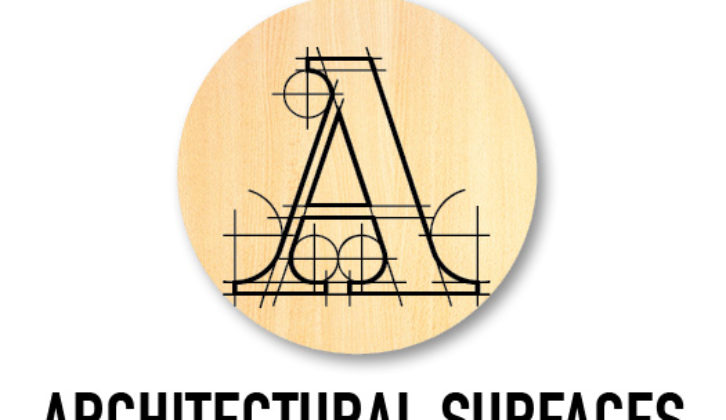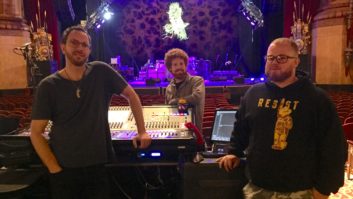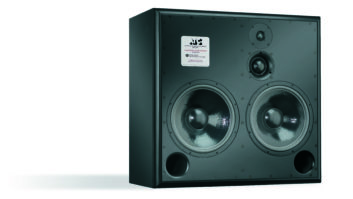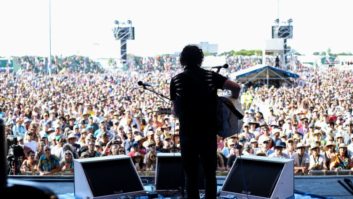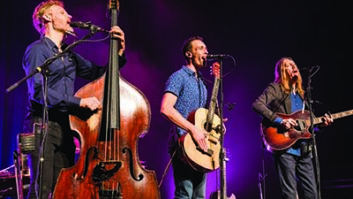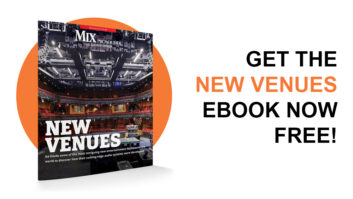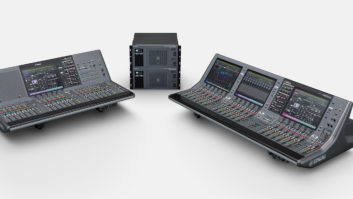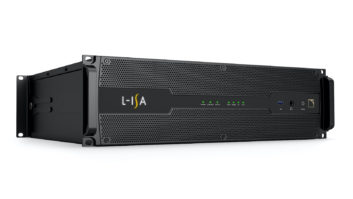Los Angeles, CA—Joel Zimmerman, known to EDM fans worldwide as deadmau5, branched out in more ways than one at the end of March when he presented his music orchestrated for strings, brass and woodwinds—but no percussion—at the Wiltern Theater in Los Angeles.
The two nights of performances, featuring a full orchestra plus synthesizers, were presented using the L-Acoustics L-ISA “immersive hyperrealism” processor—another first for the Canadian record producer, musician, composer and DJ.

By all accounts the event came together fast. Toward the end of last year, Zimmerman asked French-born film composer and producer Gregory Reveret to orchestrate the tracks on his 7 album, from 2013. By February of this year they were at EastWest Studios in Hollywood with the CMG Music Recording Orchestra to produce where’s the drop?, a compilation of orchestral versions of 15 deadmau5 tracks that was released exclusively on Tidal.com on March 30.

Music scoring mixer Alan Myerson mixed the album, but when Zimmerman asked if he would man the FOH position at a live orchestral show to coincide with the release, he demurred, suggesting that he contact Fred Vogler, the multi-Grammy Award-winning principal sound designer for the Hollywood Bowl and Walt Disney Concert Hall. “I hadn’t worked with this artist before,” says Vogler, “but I enjoy combining electronics and acoustics, and the idea of working with deadmau5 was exciting because of his reputation and following.”
Related stories from Pro Sound News:
• DiGiCo Desks Debut at Disney, March 12, 2015
• DiGiCo Added to Hollywood Bowl, Nov. 20, 2014
• The Bowl’s on a Roll, by Steve Harvey, Oct. 8, 2013
Vogler has long championed L-Acoustics products, which have been operating at the Hollywood Bowl for years, and was encouraged to discover that deadmau5 and his production team typically prefer K1/K2 systems. He pitched the idea of integrating L-ISA at the Wiltern shows. “When we gave them some illustrations and spoke to them about the experiential differences—that somebody would have grander, more spatial sound throughout the venue rather than just the more focused area at front of house—it appealed to him. L-Acoustics was very supportive in wanting to make this happen,” Vogler reports.

L-ISA is an object-based processing system that L-Acoustics has rolled out with relatively little fanfare over recent years, initially in Europe. The recent Lorde tour was one of the first opportunities for fans across the U.S. to experience the system, which uses a minimum of five speaker arrays evenly spaced across the front of the stage to generate a three-dimensional soundfield that can be experienced throughout the audience.
“It doesn’t matter where you are in the room—if you are in the L-ISA zone, you hear the spatialization,” says Carlos Mosquera, U.S.-based L-ISA Labs engineer, during soundcheck for the deadmau5 shows. “We use a controller and a processor, but the rest of the gear is the same—same boxes, same desk.”
Related: DiGiCo Integrates L-Acoustics’ L-ISA Technology, June 12, 2017
At the Wiltern, that gear comprised three hangs each of six K2 plus three Kara downfill, flanked by an array of 10 Kara modules each side, and with three KS28 subs on the deck per side in a cardioid array. That configuration is known as a Focus system; if the five hangs are identical, it is referred to as a Wide system. (There can be more than five across the front, and systems can include speakers to the sides, behind and above the audience.) Six L-Acoustics X8 speakers provided lip fill at the Wiltern. Vogler collaborated with Scott Sugden, L-Acoustics’ head of application, touring, on the design of the sound system.

The equipment was trucked in by DSS Inc., a Kansas-based sound production, integration and rental provider. Vogler, who specified the stage layout and mic plan, sub-rented the DPA mics for the strings from the local VER office.
L-ISA accepts 96 inputs and generates 64 outputs, all over MADI. “With every object, you can apply panning, you can make it wider, apply distance, and we have an aux send; right now, that’s feeding the subs,” continues Mosquera. “If we have overheads, we can pan it anywhere in the vertical plane.”
A handful of manufacturers have partnered with L-Acoustics to offer remote control software or plug-ins for their products incorporating the OSC (Open Source Control) protocol. DiGiCo is one of those, but its software has not yet been released, so Vogler mixed on an SD7 in collaboration with Mosquera, who managed positional information on his laptop and used a motion controller to pan featured sound sources, such as Zimmerman’s synthesizers, using hand gestures.

“Today is 5.1,” says Mosquera, referring to the five hangs plus subs, “but maybe tomorrow is 9.1. I don’t have to remix it. I just open the new configuration from the L-Acoustics Soundvision software and it scales, because you’re mixing to a position, not to a speaker box.”
To prepare himself for the shows, Vogler took some of the elements from the EastWest sessions to the L-ISA Lab at L-Acoustics’ U.S. headquarters near Los Angeles. “We had more than 100 inputs at front of house and just a rehearsal afternoon, then the first concert that night,” says Vogler. “So I needed some advanced warning about what we were getting.”
It wasn’t necessary to have every violin and viola as an independent audio object, he says, so he grouped various instruments in the SD7. “But we ended up using all 96 L-ISA inputs,” he reports.

“We took on a lot given the short amount of rehearsal. It was fast and furious. But the idea was to get it to sound as glorious as possible; I really wanted it to be something special. And I thought it went well.”
L-Acoustics • www.l-acoustics.com
L-ISA Immersive Sound Art • www.l-isa-immersive.com
